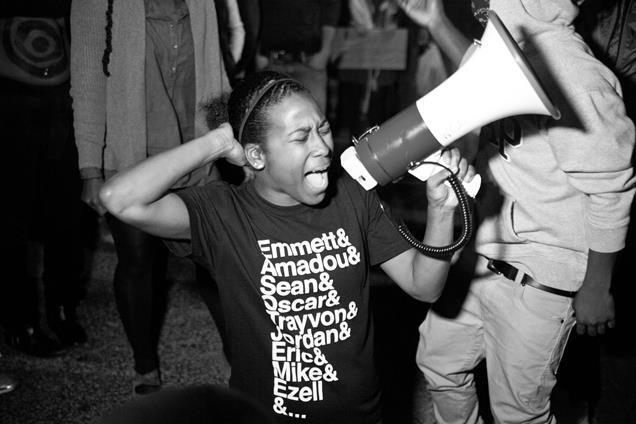Since the earliest stages of its inception, America has existed as an idea of ownership. Much of that great idea, in concept and in action, has been marred by robbery. Mostly everything unequivocally American has been taken by force.
While still in its cradle, Indigenous Americans, swindled and slaughtered, saw their then nameless land go to foreigners who merely thought themselves American. Centuries later, a painful irony would arise from that presumption, but not before more robberies.
Under new management, stolen goods landed on America’s shores. Humans were traded as tools for which to breathe life into its dream. For the thieves, rapists and rustlers who stood to benefit from it, that dream was paid in full once they declared their independence from Great Britain — perhaps their sole honorable transaction.
Close to a hundred years laters, the means for that dream (the down payment on its purchase) were freed from southern fields and eventually allowed to roam surveilled through more sprawling, concrete plantations up north.
While the Emancipation Proclamation abolished the letter of old law enslaving black folks, we remain chained to the enforcement new laws. Laws that ensure we’re still owned by the state, whether in prisons or strategically forgotten schools and neighborhoods.
August 9th, 2017, marks the three year anniversary of one of the more demonstrative declarations of America’s ownership over the black body to ring through the modern era, centuries after our supposed emancipation.
Directed by Sabaah Folayan and Damon Davis, Whose Streets? remembers the murder of Michael Brown Jr. and all that was taken from us in the name of ownership. Ownership of Mike Brown’s life, transacted by his unlawful death. Ownership of his corpse, affirmed by the four hours it spent piled onto itself in the middle of the road. Ownership of that road, bought in installments each time a memorial enshrining his spirit was defaced. Ownership of the community occupying Ferguson by birthright, stolen with tear gas, tanks and riot gear.
Whose Streets? is a stirring, triumphant documentation of Ferguson’s fight to reclaim the land their ancestors paid for in spilled blood and scarred flesh.

Descendants of stolen people — hope filled bodies labeled Bassem, Netta, Tory, Dhoruba, Tef Poe, Kayla, T Dubb O, Ashley, Dave, and Mama Cat — reckon with the fact that some day it could be their frame broken apart and heaped on the pavement, lifeless and nameless. And thus, a beautiful struggle to claim themselves and each other ensues.
The documentary recalls the days, weeks, and months immediately following Darren Wilson’s killing of Brown. Residents of Ferguson gave their testimonies, and told the teenage boy’s story through their own. Most told stories of peacefully marching through the streets they demanded be returned. All told stories of speaking against the police force they petitioned for reform.
In the midst of all that, some property was damaged, and they heard outside cries imploring them not to burn their “own neighborhoods.” But once something is stolen, it’s up to the victims of the theft to decide which pieces of their belongings they want back.
David Whitt, a Ferguson resident whose lease was mysteriously terminated after he founded We Copwatch, wants to reclaim his home in Canfield Green apartments where he once lived, saw Mike Brown die, and vowed to see everything else his lens could capture. Brittany and her partner Alexis want to recoup the innocence of Brittany’s daughter Kenna, who once cried through the night, afraid her mother’s life would be taken by the same force that burglarized Mike’s.
Whose Streets? soars where other films may fail. It’s an image of black folks painted by black folks. It depicts the whole of their experience—from suffering to healing, from sinking through a void to retrieving one’s agency.
If riots are truly the language of the unheard, Whose Streets? provides a booming megaphone from which to reply “our streets.”
